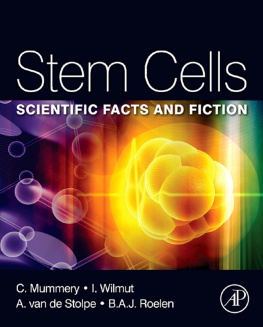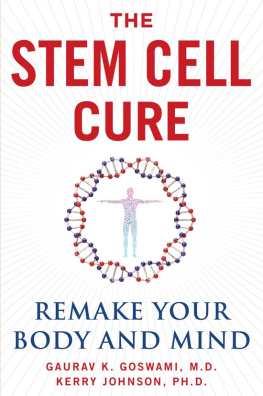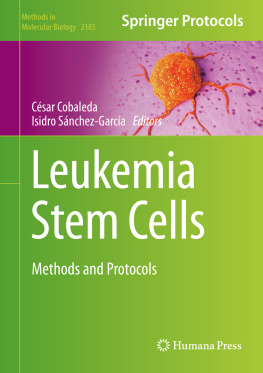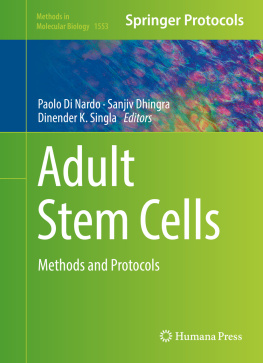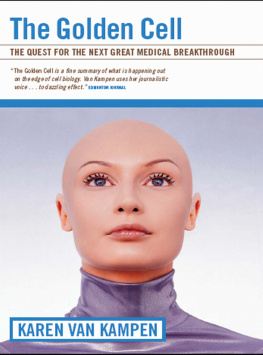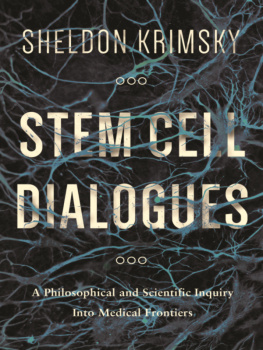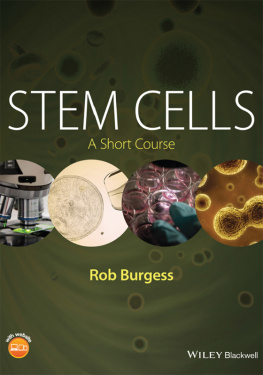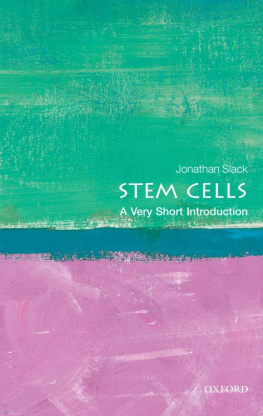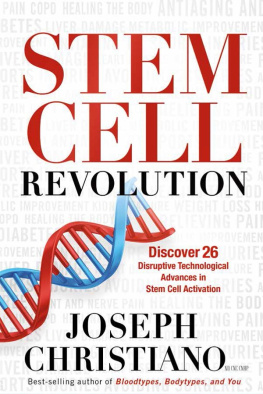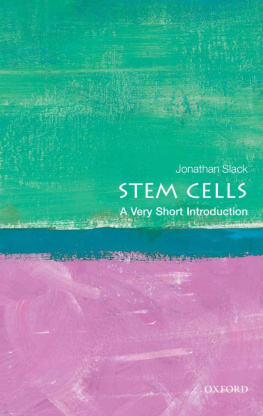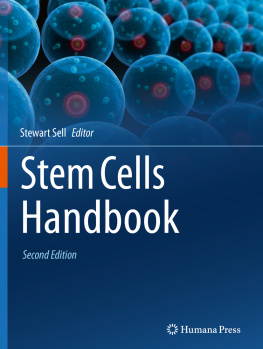Front Matter
Stem Cells
Scientific Facts and Fiction
Written and edited by
Christine Mummery
Leiden University Medical Center, The Netherlands
Sir Ian Wilmut
University of Edinburgh, UK
Anja van de Stolpe
Hubrecht Institute, Utrecht, The Netherlands
Bernard A.J. Roelen
Utrecht University, The Netherlands
AMSTERDAM BOSTON HEIDELBERG LONDON NEW YORK OXFORD PARIS SAN DIEGO SAN FRANCISCO SINGAPORE SYDNEY TOKYO
Academic Press is an imprint of Elsevier
Copyright 2011 Elsevier Inc.. All rights reserved.
Copyright
Academic Press is an imprint of Elsevier
32 Jamestown Road, London NW1 7BY, UK
30 Corporate Drive, Suite 400, Burlington, MA 01803, USA
525 B Street, Suite 1800, San Diego, CA 92101-4495, USA
First edition 2011
Copyright 2011 Elsevier Inc. All rights reserved
This book is based on a popular text written by the authors in 2006 and published in Dutch. The widespread general and academic popularity of the Dutch book lead to a second printing and the desire to publish a new, more widely available and accessible edition in English. This English edition is fully updated and includes the latest in stem cell research including induced pluripotent cells.
No part of this publication may be reproduced, stored in a retrieval system or transmitted in any form or by any means electronic, mechanical, photocopying, recording or otherwise without the prior written permission of the publisher. Permissions may be sought directly from Elsevier's Science & Technology Rights Department in Oxford, UK: phone (+44) (0) 1865 843830; fax (+44) (0) 1865 853333; email: /rights for further information
NoticeNo responsibility is assumed by the publisher for any injury and/or damage to persons or property as a matter of products liability, negligence or otherwise, or from any use or operation of any methods, products, instructions or ideas contained in the material herein.
Because of rapid advances in the medical sciences, in particular, independent verification of diagnoses and drug dosages should be made
British Library Cataloguing-in-Publication Data
A catalogue record for this book is available from the British Library
Library of Congress Cataloging-in-Publication Data
A catalog record for this book is available from the Library of Congress
ISBN: 978-0-12-381535-4
For information on all Academic Press publications visit our website at elsevierdirect.com
Typeset by TNQ Books and Journals Pvt Ltd.
www.tnq.co.in
Printed and bound in Italy
10 11 12 13 14 15 10 9 8 7 6 5 4 3 2 1
Preface
A quick scan of the Internet using the search term stem cells immediately delivers more than 17 million hits. Why then a textbook on stem cells? Exactly for that reason. Stem cells have become such a hot topic in every kind of literature and media source imaginable that a day hardly goes by without the public in every developed country reading or seeing something about these cells. Popular magazines, information sites for patients, novels and even party political programs may all mention stem cells sooner or later. How then, is one to understand what all the attention is about? How is one to understand whether stem cells have any relevance at all to general health or disease treatment now or in the future? How can facts from fiction be distinguished?
This is what this book is about and why it was written. The authors first wrote a popular book on stem cells in 2006, in Dutch. It ended up in school and public libraries, in medical and engineering students reading lists and in politicians briefcases. It went into a second print in 2007 just before it became clear that a new cell, called an induced pluripotent stem cell, was going to impact the research field and our thoughts on which way research should go. Here was a reason to rewrite and update the book and this time to make it more widely accessible by writing it in English. Our goal has been to provide a state of the art overview of the scientific facts and to highlight the science fiction, to provide the reader with the basic information to understand what the field is about, where it might be going and why so many of the promised therapies are still far from clinical application. We interviewed some of the top scientists in the field, we describe examples of clinical successes and we show examples of institutes and organizations in which exciting research is taking place. We also describe the pitfalls for the unwary looking desperately for a solution to a loved one's disease.
We hope that the book will provide you, the reader, with what you are looking for in searching through your 17 million hits.
Christine Mummery, Bernard Roelen, Anja van de Stolpe and Ian Wilmut
Acknowledgments
We would like to express our gratitude to everyone who made this book possible, including Veen Magazines and Elsevier, and to all the scientists, past and present, who contributed to the stem cell field but to whom we were unable to give personal credit and acknowledgment because of this book's informal nature. Support was provided by the Netherlands Institute of Regenerative Medicine (NIRM). Elaine Dzierzak (scientific director of NIRM) and Rini de Crom (managing director of NIRM) are particularly thanked for advice.
We thank the following people for their excellent contributions to some of the specialized chapters often including unique illustrations:
Reinier Raymakers (University Medical Center Utrecht) for his contribution on hematology in ).
James Thomson (University of Wisconsin), Shinya Yamanaka (University of Kyoto), Susan Solomon (New York Stem Cell Foundation), Alan Trounson (California Institute for Regenerative Medicine), Nancy Witty (International Society for Stem Cell Research), Alex Damaschun, Anna Veiga, Joeri Borstlap (hESCreg), Michele de Luca (University of Modena and Reggio Emilia, Modena), Anthony Hollander (University of Bristol), Susana Chuva de Sousa Lopes (Leiden University Medical Center), Rui Monteiro (University of Oxford), Mark Peschanski (I-Stem) are all warmly thanked for their rapid responses to requests for input to information boxes within the text.
Chapter 1. The Biology of the Cell
Outline
DNA, Genes and Chromosomes
How is the Amount of mRNA Regulated?Transcription Factors
Epigenetic Regulation
RNA Interference
From mRNA to a Functional Protein
From DNA and Proteins to a Cell with a Function
DNA Differences Between Genomes: Mutation or Variation?
Diseases Due to Variations and Genome Mutations
Dominant or Recessive?
DNA Outside the Nucleus: Bacterial Remains
Cell Lines and Cell Culture
This book is about stem cells. Stem cells and their applications in clinical medicine, biotechnology and drug development for pharmaceutical companies, involve many facets of biology; from genetics and biochemistry to synthetic scaffolds and three-dimensional architecture for tissue engineering. For this reason the most important molecular and cell biological principles needed to understand stem cells will be introduced to the reader in this chapter.

